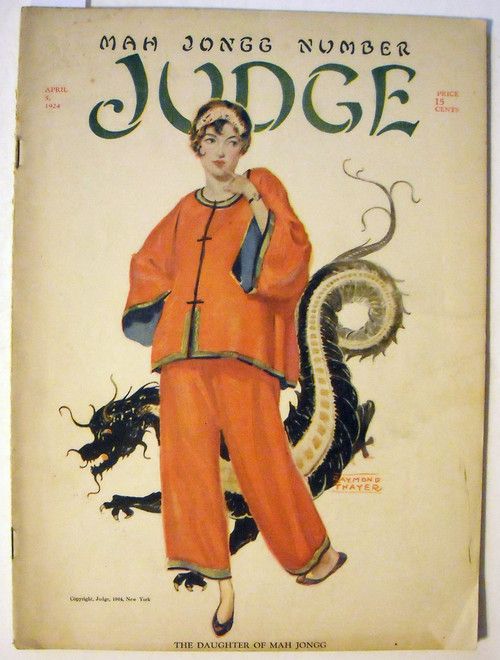Who doesn't love Dragons? In Mahjong Dragons are Honors tiles, sometimes helping to increase point totals (in certain ways of play). On tiles they can be figural images of that creature (the MOST fun!) or Chinese written words (characters), or sometimes the letters C, F, P or B. The term "Dragon" was not the original one for these special tiles, rather these Honors began as references to the game of archery, as described in the link below.
http://www.mahjongg.com/dragons.htm
We all grew up hearing stories about these fantastic creatures, although the tales were different depending on where you grew up. If you lived in the U.S. or Europe, you were sure to hear stories of fierce Dragons burning up the countryside with their breaths of fire, terrifying the countryfolk. But in Asia, Dragons were kind and benevolent.
Below is an image of St George killing a Dragon, clearly one of the European kinds.
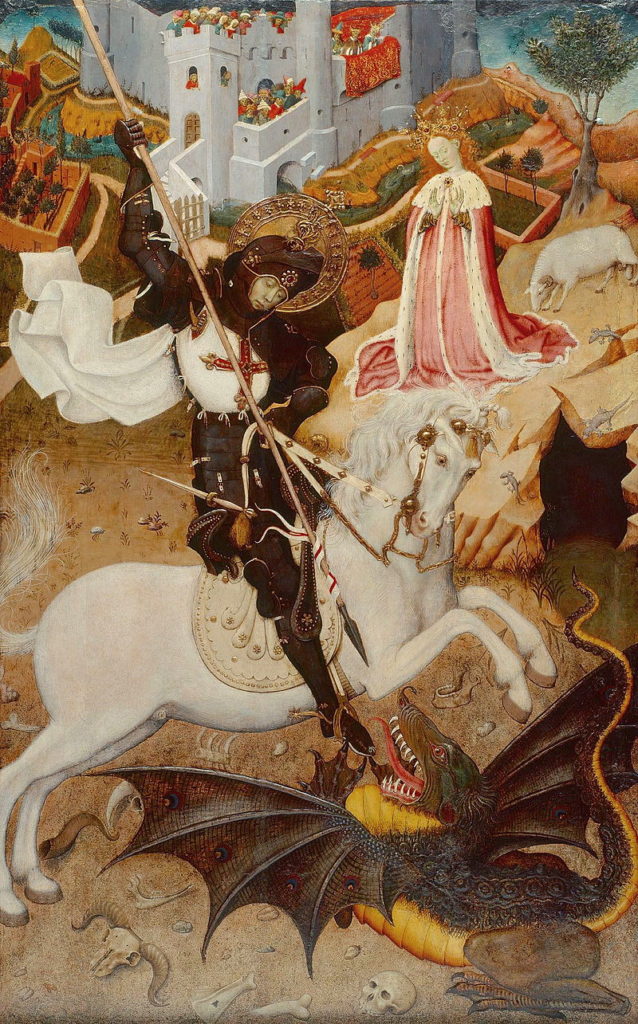
No one in China would ever kill a Dragon.
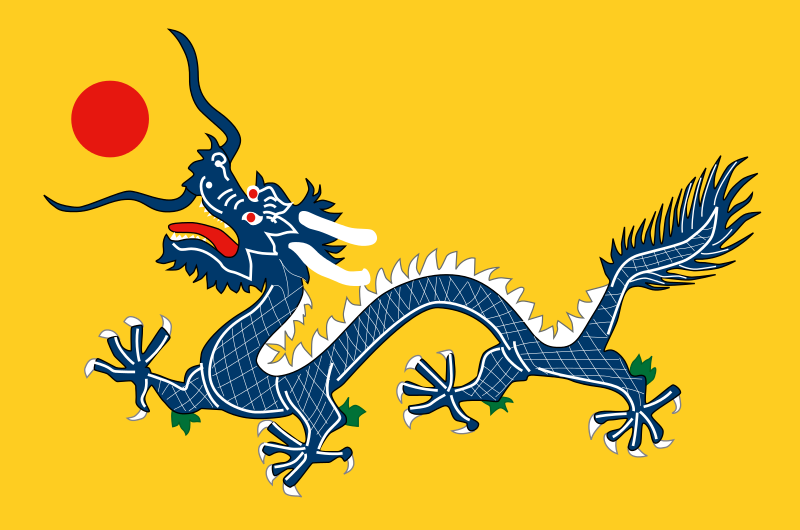
Above is the flag of the last Dynasty in China. Chinese Dragons only appear when times are good, so perhaps this Dragon represents a bit of wishful thinking on the part of the government, given what was going on then! (Read Jung Chang's Empress Dowager Cixi, if you have not already done so, to find out the terrible situation that existed in China during those years.)
People in China have always loved Dragons, and they are everywhere. Dragons decorate everything, including Imperial building walls, as seen below.
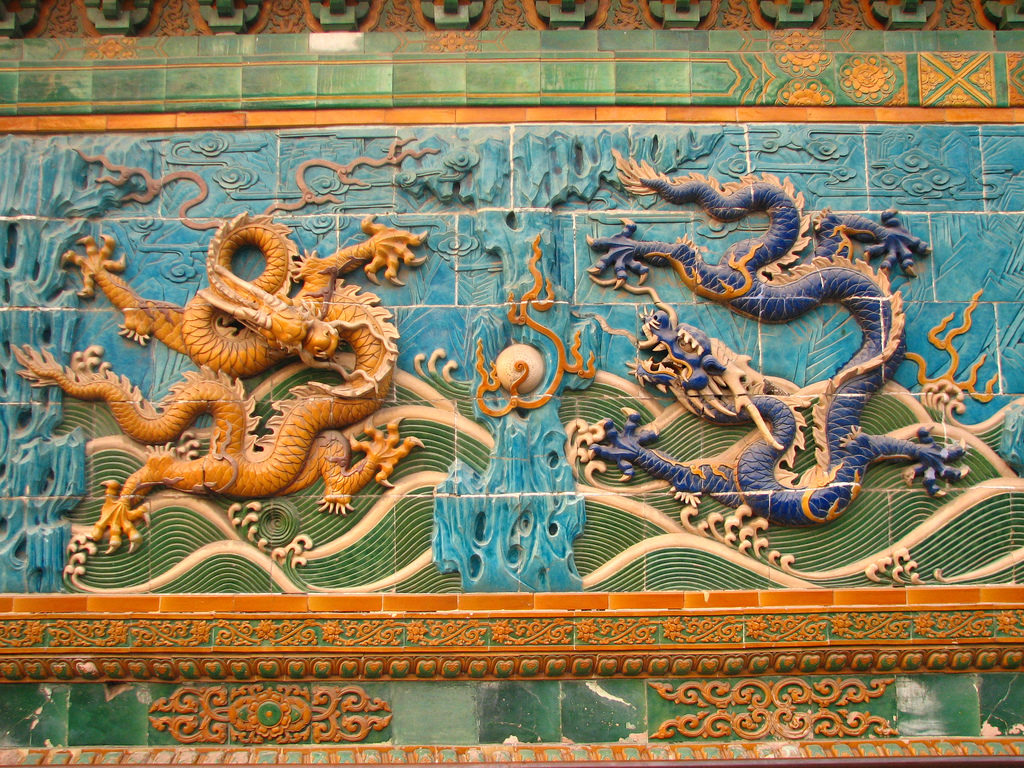
The great marketers of the Mahjong companies took advantage of the world's fascination with Chinese culture, bringing bits of it into the lives of Americans and Europeans in the 1920s. Some companies went so far as to link the game to Confucius, who marketers claimed invented Mah-Jongg. Trouble was, Confucius had already been dead for over 2,000 years by the time the game came about! But there actually might be a tie to Confucius, other than the inspired thinking of the Mah-Jongg Sales Company: the three different colors of the dragon tiles represent the cardinal virtues taught by Confucius: red is benevolence; green sincerity; and white filial piety.
In the early 1920s, people really got into the game. (Some of us still do!) When gathered around the MJ table, people dressed in Chinese-themed clothing, and ate Chinese food.
Mahjong was everywhere, and MJ themes often appeared on magazine covers. On this copy of Judge, a young lady wearing Chinese-themed garb is sharing the cover with a Dragon, a somewhat subtle reference to MJ. You can see that the Dragon is Chinese, because he's lacking the wings we'd see on a European one. And the young lady doesn't look scared either, adding to the Asian origin of the fabulous creature. (But what's going on with her left foot? )
These next Dragons are from my book: Mah Jongg The Art of the Game. Photos by Michel Arnaud
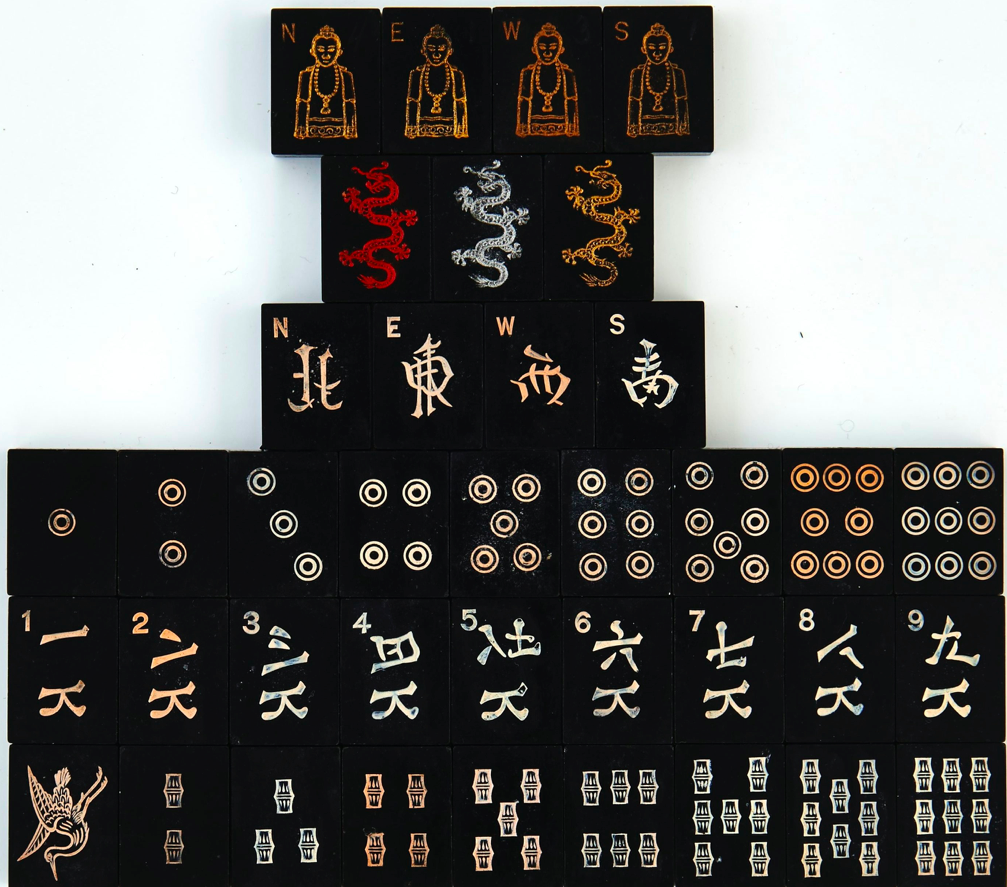
Aren't these fun, skinny little Dragons? And look at the dive-bombing crane!! Interestingly, we don't know much about this set. Even the Waterbury Button Company doesn't have any information about it. But given that a button company made a set of mahjong tiles, I'd venture to say that there must have been a reason. The Dots look like buttons. And those Bams: toggles you'd see on coats. Subtle advertising, right?
Below we see a Phoenix on the top row, nothing like our Phoenix either, and a Dragon on the bottom. Chinese Dragons like to fly in the clouds, so you can only see part of this one's body. He's also playing with a pearl, seen in red on tile 3, as Chinese Dragons do,, although the meaning of the pearl is not clear.
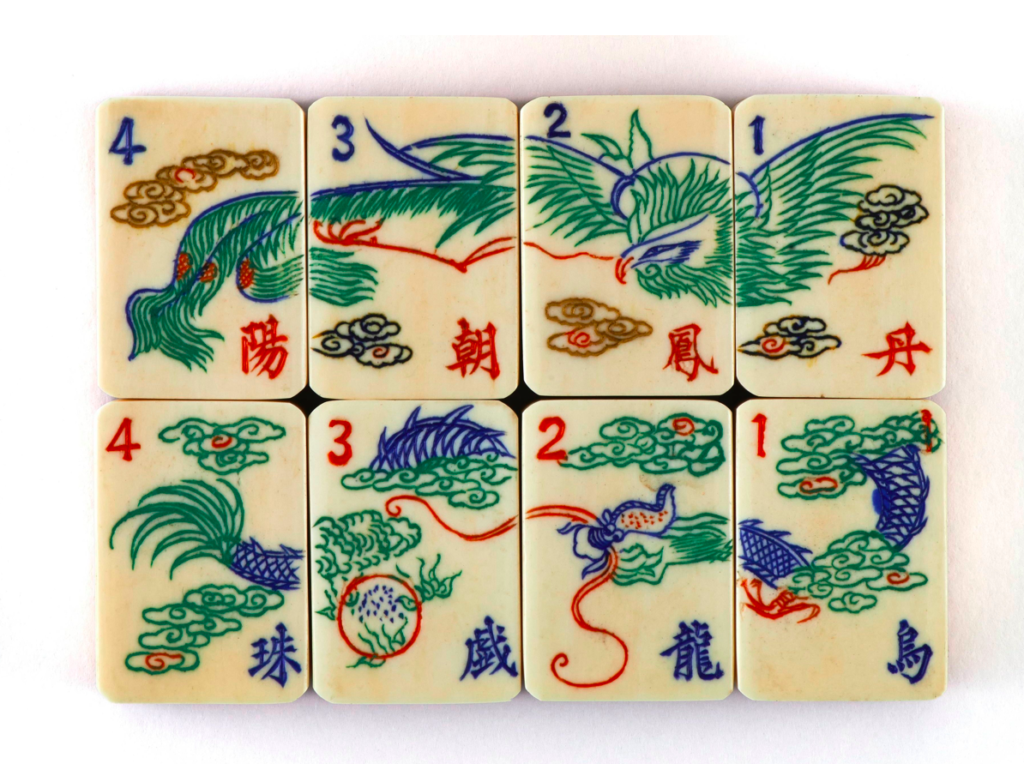
And next is one of my favorite game accessories, a delicately carved ivory wind indicator, about 2" across, in three pieces. The top nub, holding the three pieces together, is the pearl the dragon plays with. BTW: this photograph clearly shows the cross-hatching only seen in ivory.
This is a beautifully colored set with wonderful designs, featuring fabulous Dragons:
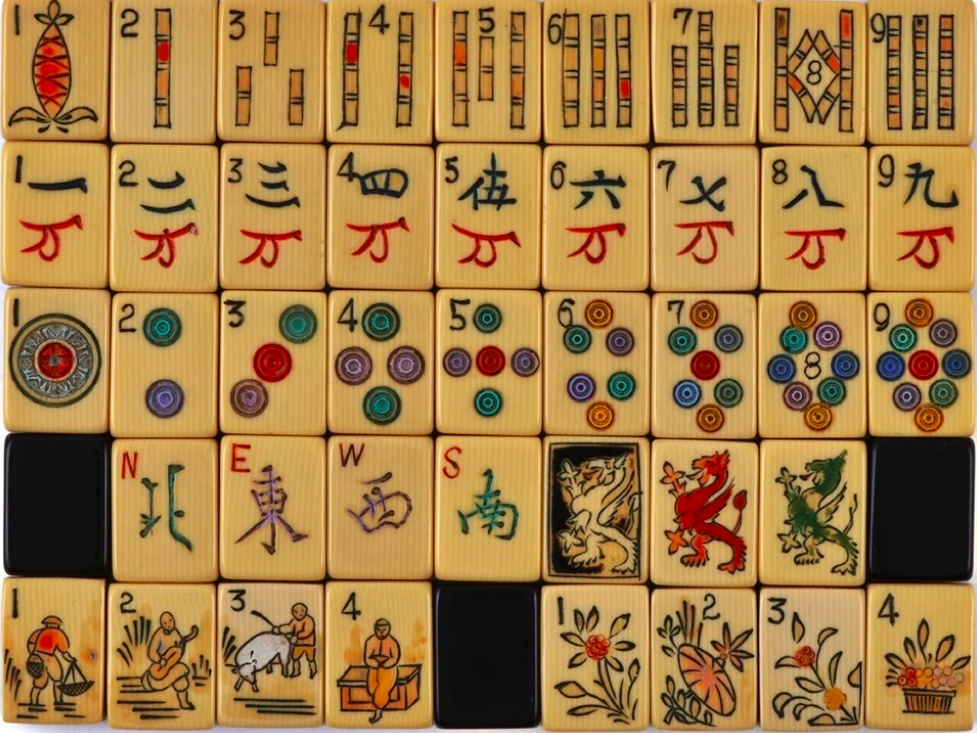
These Dragons are really different. Want to guess why? The set was made by the Chinese Game Company out of Montreal!! Montreal has emotional and cultural ties to France, so we have European winged dragons here, looking like they are ready to be placed on shields carried into battle.
Dragons have long held a place in our thoughts. A man in Pennsylvania was intrigued enough by Dragons to make a bellows into this charming piece, recently sold by American Primitive Gallery. Although there are no wings here, the artist, a blacksmith working with fire every day, must have been thinking about Dragons breathing fire right? Clearly this would have been the European version of the creature.
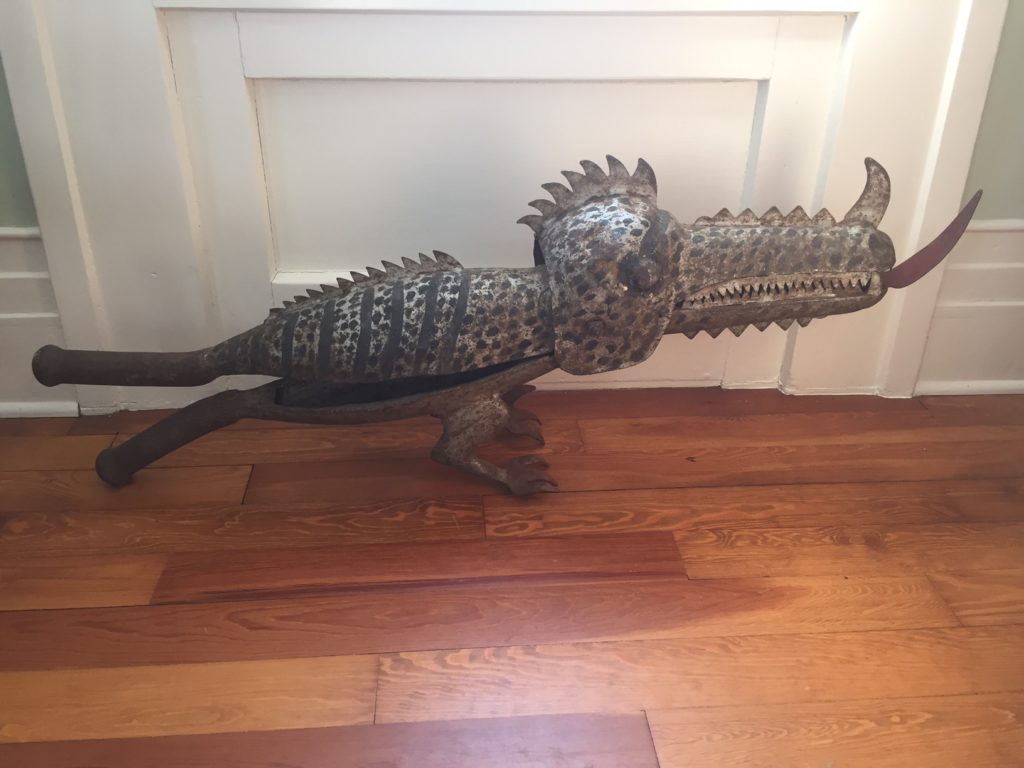
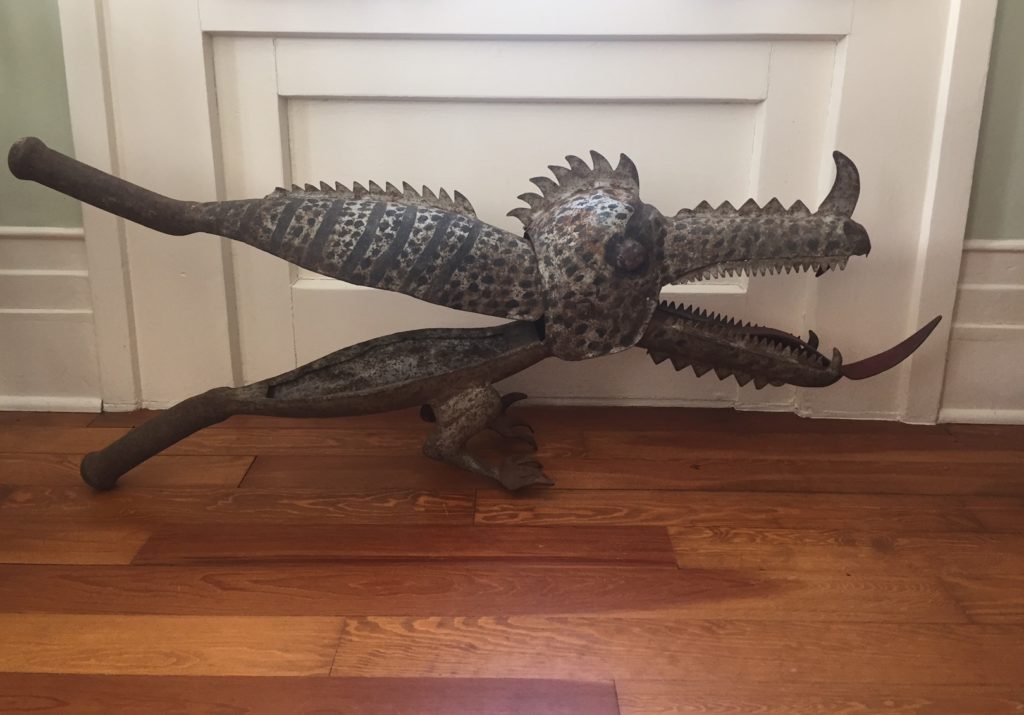
There are theories as to how the idea of Dragons came about, and Smithsonian Magazine covers some:
http://www.smithsonianmag.com/science-nature/where-did-dragons-come-from-23969126/
I love the idea that dinosaur fossils were identified as Dragons. "Speaking" of dinosaurs, here's up-to-the-minute news about T-Rex, now an essential part of another game many of us love.

